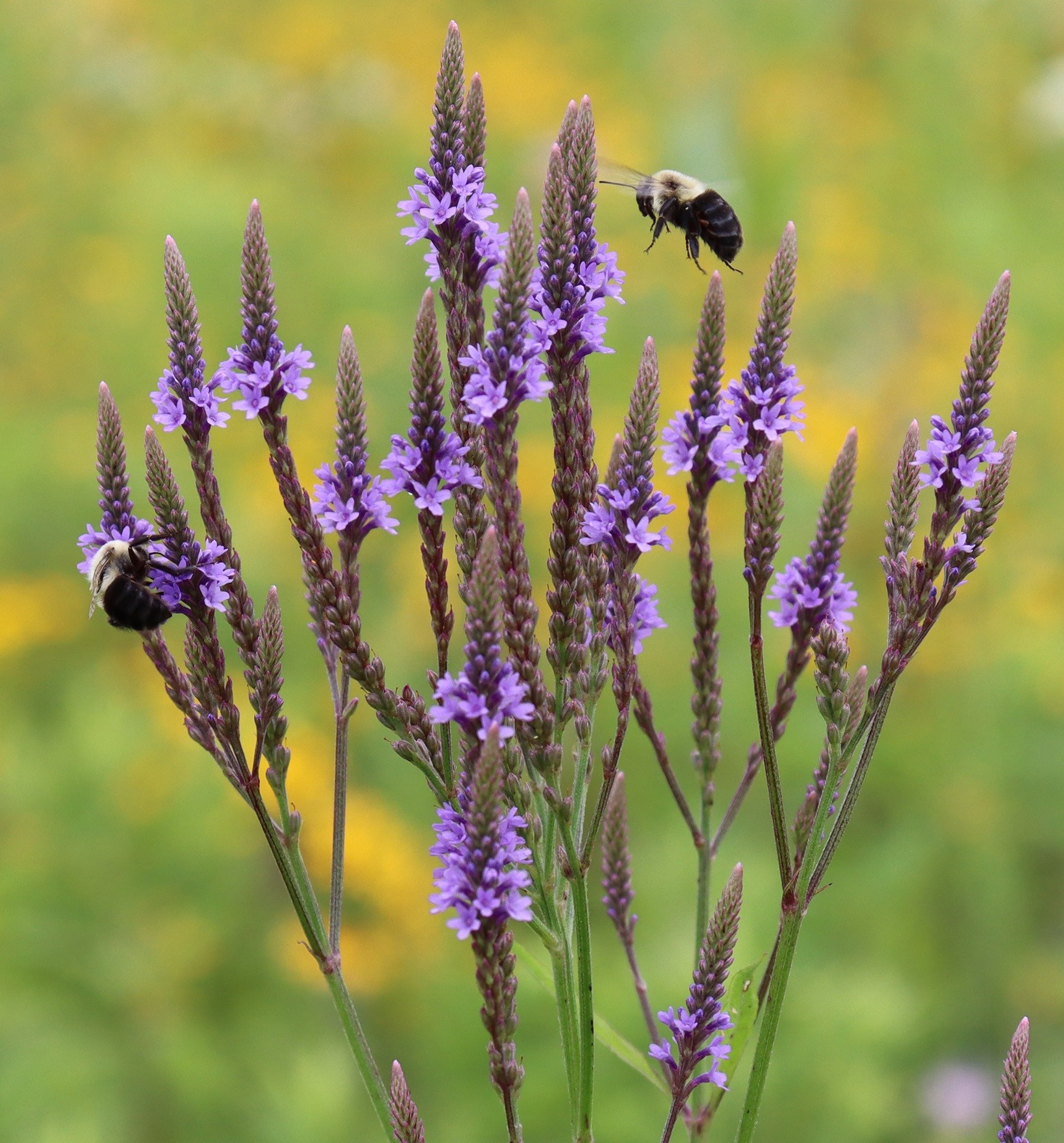Northeastern Seedmix Species List and Description
Our Seed Mixes are temporarily sold out and will be back in stock in June 1st, 2024
Introduction
This seed mix has a balance of low moisture adapted species, intermediate moisture adapted species, and saturated or seasonally saturated soil adapted species so that no matter the moisture level of your soil; the seed mix will be successful. This diversity of species also has the sunlight adaptability to succeed with as little as 4 hours of direct sunlight a day the same as a full day of sunlight. All of our seed mixes have a ratio of 95 : 5 Wildflower seeds to Grass Seeds. This high percentage of native wildflowers ensures long-term balance of wildflowers and grasses without burning and without Elk (or Bison further west) who would historically help keep the grass dominance in balance with their selective grass grazing behavior. Seed Mixes with higher ratio of native grass seed are often doomed to become mostly grass with fewer and fewer wildflowers as it matures without the presence of large grass grazers such as Elk or Bison. When it come to how your native seed mix will look while in bloom; the dominance and presence of one wildflower species to another depends on the light conditions, soil moisture, and soil type. So this seed mix will mature differently aesthetically from site to site due to the high diversity of wildflowers.
Spring into Early Summer Blooming Species
Golden Alexanders Zizia aurea, Hairy Beardtongue Penstemon hirsutus, Small Yellow Wild Indigo Baptisia tinctoria, Ohio Spiderwort Tradescantia ohiensis, Blackeyed Susan Rudbeckia hirta, Butterfly Milkweed Asclepias tuberosa, Common Milkweed Asclepias syriaca
Notes: The spring to early summer blooming species of the northeast seed mix offer a wide variety of flower types ensuring that a good diversity of pollinators will be supported. While Native Meadows naturally do not bloom heavily in the spring time; the combination of Golden Alexander, Hairy Beardtongue, Small Yellow Wild Indigo, and Ohio Spiderwort will provide a cheery opening scene to the native meadow aesthetic.
Tap on the pictures below to enlarge the Spring into Early Summer blooming species example pictures of the Northeastern Seedmix.
Midsummer Blooming Species
Wild Bergamot Monarda fistulosa, Narrowleaf Mountainmint Pycnanthemum tenuifolium, Purple Coneflower Echinacea purpurea - not locally native to the Northeast but optional, Oxeye Sunflower Heliopsis helianthoides, Showy Ticktrefoil Desmodium canadense, Obedient Plant Physostegia virginiana, Virginia Mountainmint Pycnanthemum virginianum, Wild Senna Senna hebecarpa, Culver's Root Veronicastrum virginicum, Blue Vervain Verbena hastata
Notes: The midsummer is the most exciting blooming season to many native meadow owners. This specific combination is widely adapted from drier soils, intermediate moisture, and high moisture or saturated soils. From the spreading nature of Obedient Plant and Virginia Mountain Mint, to the heavily reseeding nature of Wild Bergmot, Heliopsis, Wild Senna, and the long lived nature of Culver’s Root, Showy Trefoil, and Slender Mountain mint - this midsummer combination will be a backbone long-term to the northeastern native seed mix. Purple Coneflower is not native to the northeast, but is also not invasive or ecologically negative so you’re free to select the option to add it or not add it to your seed mix during checkout.
Tap on the pictures below to enlarge the Spring into Midsummer blooming species example pictures of the Northeastern Seedmix.
Late Summer Blooming Species
Early Goldenrod Solidago juncea, Partridge Pea Chamaecrista fasciculata, Joe Pye Weed Eupatorium fistulosum, Common Boneset Eupatorium perfoliatum, Browneyed Susan Rudbeckia triloba, Great Blue Lobelia Lobelia siphilitca, New York Ironweed Vernonia noveboracensis, Common Sneezeweed Helenium autumnale
Notes: In late summer, drought and heat beckon flowers to bloom from wetter areas such as Joe Pye Weed, Common Boneset, Great Blue Lobelia, and Common Sneezweed. This combination is counterbalanced by species adapted to drier soils in late summer such as Early Goldenrod, Partridge Pea, Browned Susan, and New York Ironweed. So whether your soil is drier or wetter, you’ll still have late summer blooming species in northeastern seed mix. Also Obedient Plant is often still blooming in late summer from the midsummer collection of species written about above.
Tap on the pictures below to enlarge the Spring into Late Summer blooming species example pictures of the Northeastern Seedmix.
Early Fall Blooming Species
Dwarf Goldenrod Solidago nemoralis, Anise Scented Goldenrod Solidago odora, Wrinkled Leaf Goldenrod Solidago rugosa, New England Aster Symphyotrichum novae-angliae, Frost Aster Aster pilosus, Zigzag Aster Aster prenanthoides, Arrowleaf Aster Aster sagittifolius
Notes: We’ve selected 3 non-aggressive Goldenrods (unlike Canada Goldenrod) to adapt to wide range of conditions in this northeastern seedmix: Dwarf Goldenrod, Anise Scented Goldenrod, and Wrinkled Leaf Goldenrod. These are accented by a mix of 4 asters: New England Aster, Frost Aster, Zig Zag Aster, and Arrowleaf Aster to ensure a good diversity of native flowers to end the season with.
Tap on the pictures below to enlarge the Early Fall blooming species example pictures of the Northeastern Seedmix.
Grasses and Sedges (5% of total seeds in the seed mix)
Notes: Grasses and Sedges become over dominant in the absence of grazers such as Bison, Elk, and Muskrat (Sedges). To prevent these species from lowering diversity and becoming over dominant, they are only 5% or less of the total seeds in the seed mix. We also omitted Big Bluestem as it’s too aggressive and tall for the urban, suburban, rural residential native meadow context.
Fox Sedge Carex vulpinoidea, Little Bluestem Schizachyrium scoparium, Indiangrass Sorghastrum nutans, Canada Wild Rye Elymus canadensis
Tap on the pictures below to enlarge the Native Grass and Sedge species example pictures of the Northeastern Seedmix.





































